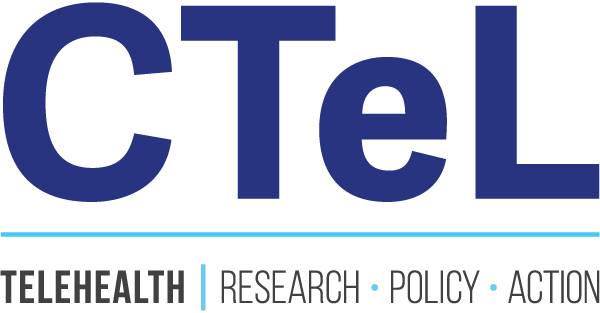The Perfect Storm: How Rural Hospitals Can Thrive Through Digital Health
A perfect storm is brewing for rural hospitals across the nation. A confluence of financial pressures, workforce shortages, and now, the far-reaching implications of the "One Big Beautiful Bill Act," are creating unprecedented challenges for these vital community pillars. However, within this storm, a powerful lifeline is emerging: telehealth and digital health services.
For savvy organizations, this is not just a moment of crisis, but a pivotal opportunity to innovate and secure a stronger future. This is where the true, and often overlooked, impact of digital transformation comes into play, and where strategic partnerships, such as a membership with The Center for Telehealth and eHealth Law (CTeL), become indispensable.
The "One Big Beautiful Bill Act," signed into law on July 4th, is a significant contributor to this turbulence. The bill, which will be phased in over several years, introduces a series of measures that, while aimed at broader healthcare reform, could disproportionately affect rural facilities. Key provisions include:
Limited ACA special enrollment for most enrollees
Restrictions on state-directed payments and provider taxes for hospitals
Cuts to Medicaid
Medicaid work requirements developed by states as early as January 2027
Increased oversight of Medicaid provider taxes
$50 billion over five years for the Rural Health Transformation
The cumulative effect of these provisions is a significant threat to the financial viability of many rural hospitals, who are already struggling to keep their doors open.
Telehealth: The Essential Lifeline in the Storm
This is where the transformative power of telehealth, virtual care, and digital health services becomes not just a "nice-to-have," but an essential strategy for survival and growth. The evidence supporting the impact of telehealth in rural communities is overwhelming.
Expanding Access to Specialty Care: Research has consistently shown that telehealth bridges the gap between rural patients and specialists. A literature review on telehealth's impact on rural hospitals highlights how services like telecardiology, telestroke, and telebehavioral health are providing critical, timely care that would otherwise be inaccessible. This not only improves patient outcomes but also reduces the need for costly and time-consuming patient transfers (Rural Health Information Hub, 2024).
Improving Chronic Disease Management: For the millions of rural Americans living with chronic conditions, telehealth offers a way to receive continuous, proactive care from the comfort of their homes. Remote patient monitoring (RPM) allows for the real-time tracking of vital signs, enabling early intervention and reducing hospital readmissions. A study of a teleoncology program in rural Tennessee found that 95% of patients reported their experience with virtual visits to be as good as or better than in-person appointments (Bhatia et al., 2022).
Addressing Workforce Shortages: The chronic shortage of healthcare professionals in rural areas is a well-documented crisis. Telehealth helps to alleviate this by allowing a single specialist to serve a much larger geographic area. Provider-to-provider telehealth consultations also empower rural primary care physicians, giving them access to the expertise they need to manage a wider range of conditions locally (Agency for Healthcare Research and Quality, 2022).
Overlooked Insights: The Ripple Effects of Digital Health
Beyond the immediate benefits, telehealth creates a cascade of positive effects that are often overlooked:
Reduced Patient Burdens: The time and cost of travel for healthcare are significant burdens for rural patients. Telehealth eliminates these, leading to higher patient satisfaction and better adherence to treatment plans.
Strengthening Local Care: While some fear that telehealth will lead to patients bypassing local hospitals for urban centers, the opposite can be true. By enabling rural hospitals to offer a wider range of services, telehealth can help to keep care within the community, strengthening the financial position of the local hospital.
Enhanced Data and Public Health: The data generated by digital health platforms can provide invaluable insights into the health needs of rural communities, allowing for more targeted and effective public health interventions.
Weathering the Storm with a Strategic Partner: The CTeL Advantage
Navigating the complex legal and regulatory landscape of telehealth can be daunting, especially for resource-strapped rural hospitals. This is where a membership with an organization like The Center for Telehealth and eHealth Law (CTeL) becomes a critical advantage.
CTeL is a non-profit research institute dedicated to addressing the legal and regulatory dimensions of digital health. For nearly three decades, CTeL has been at the forefront of telehealth policy, providing its members with the expert guidance and strategic insights needed to succeed. A CTeL membership helps organizations:
Navigate the Regulatory Maze: CTeL provides up-to-the-minute analysis of the ever-changing state and federal laws governing telehealth, from reimbursement and licensure to privacy and security. This is invaluable for ensuring compliance and maximizing revenue.
Shape the Future of Telehealth: CTeL is a powerful advocate for its members, working to shape policies that support the growth and sustainability of telehealth. By joining CTeL, organizations can have a voice in the decisions that will impact their future.
Access a Network of Experts: CTeL members become part of a vibrant community of telehealth leaders, including healthcare providers, legal experts, and policymakers. This network provides a unique opportunity for collaboration, learning, and sharing best practices.
The "perfect storm" facing rural hospitals is a formidable challenge, but it is not insurmountable. By embracing the transformative power of telehealth and digital health, and by partnering with expert organizations like CTeL, rural hospitals can not only weather this storm but emerge stronger, more resilient, and better equipped to serve their communities for generations to come. The future of rural healthcare is digital, and the time to act is now.
Works Cited
Agency for Healthcare Research and Quality. (2022, December 26). Improving Rural Health Through Telehealth-Guided Provider-to-Provider Communication. https://effectivehealthcare.ahrq.gov/products/rural-telehealth/research
Bhatia, S., et al. (2022, August 20). Telehealth in Response to the Rural Health Disparity. PMC. https://pmc.ncbi.nlm.nih.gov/articles/PMC9392842/
Rural Health Information Hub. (2024, April 12). Telehealth and Health Information Technology in Rural Healthcare Overview. https://www.ruralhealthinfo.org/topics/telehealth-health-it

